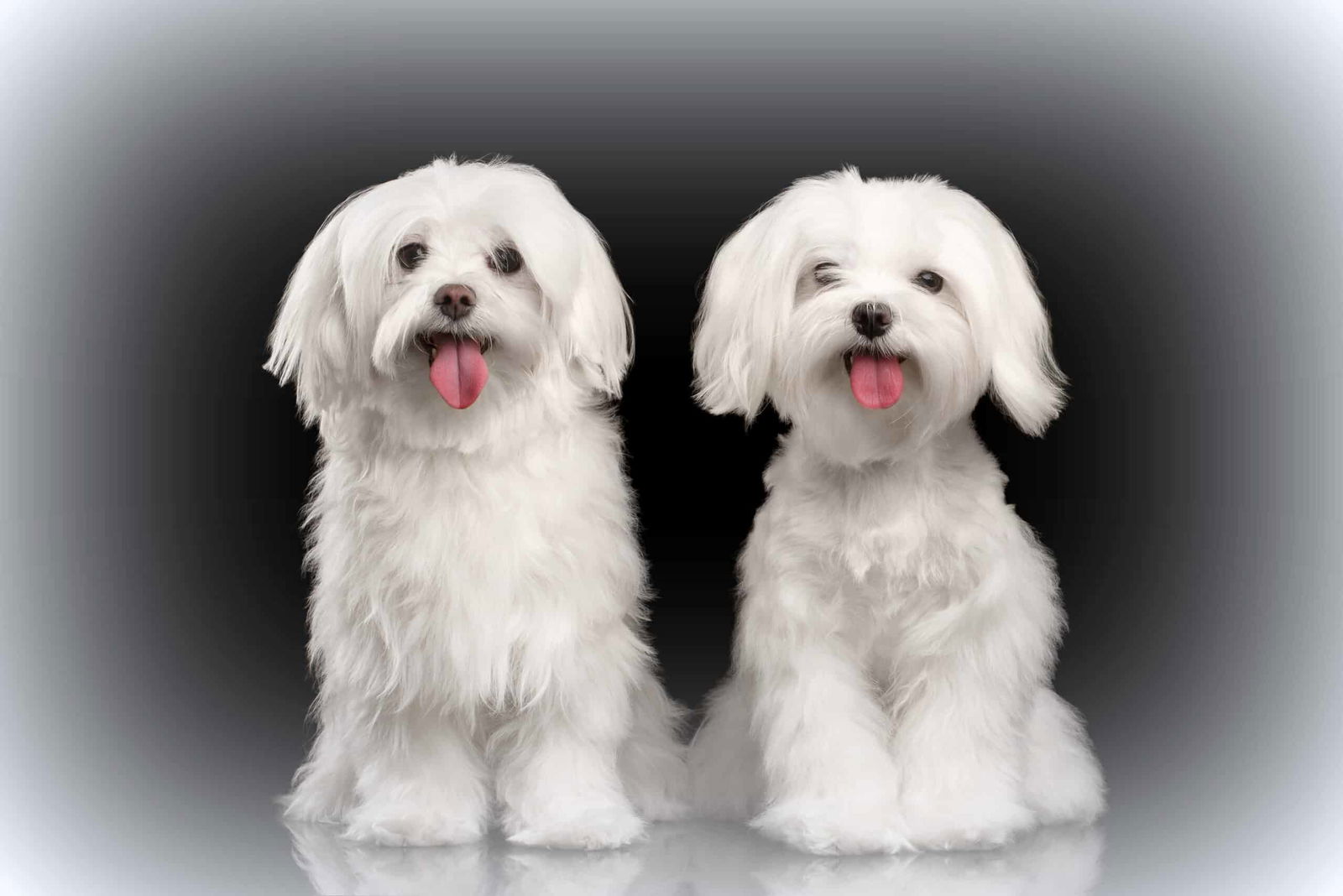Have a question about our Maltese puppies?
"*" indicates required fields
overview of the Maltese Dog Breed
Are you looking for a small, spunky, sprightly companion to brighten your home or apartment?
Browse our Maltese puppies for sale below!
Maltese dogs were bred and born to be companions. They are sociable, friendly, and thrive on human love and interaction. As toy dogs, they do well in apartments. They should not be kept outside, as they are somewhat fragile and do not easily tolerate being left alone.
Because they are small and delicate, Maltese dogs are not the best choice for families with small children. Puppies, especially, may get hurt if they are dropped or over-hugged.
That said, these dogs will make an excellent companion for almost anyone! Purchase your Maltese puppy today, or check out our other dogs for sale!
Maltese temperament
Companionable: Maltese dogs were designed to be companions. They will never tire of human company. They adore their humans and want to be with them 24/7. That kind of hero-worship does the soul good! But…nothing is free. This love and attachment can also cause some separation anxiety issues.
Trainable: Because Maltese dogs love their people so much, they are fairly easy to train. They are eager to please and do well with positive reinforcement. They are smart and catch on quickly. To them, training is all fun and games as long as there are people involved!
Clownish: Maltese dogs are comfortable in the spotlight. They love to clown around and soak up attention and praise. These sprightly, silly little dogs will have you rolling on the floor with their antics.
Alert: Although small, Maltese dogs can make good watchdogs. They are alert and aware of their surroundings and will let you know if anything is out of the ordinary.
Sensitive: Maltese dogs can be sensitive to changes in their environment or routine. They may not respond well to harsh training methods or a chaotic household.
Alert and Watchful: Maltese dogs have a keen sense of hearing and can be alert to sounds and movements around them. They may bark to alert their owners to anything unusual.
Housedog: As one of the smallest toy breeds, Maltese dogs make great house or apartment dogs. They are delicate and fragile and are not hardy enough to be outside dogs. Also, they do not enjoy being left alone in a doghouse where there are no people. They may get depressed and destructive if left alone.
It’s important to note that while these traits are common in the breed, each individual dog is unique and can display a range of behaviors. Early socialization, consistent training, and a loving environment contribute to the development of a well-rounded and well-behaved Maltese.
Maltese Breed history
The Maltese breed has had a lengthy (and Mediterranean!) history. Having been around since the time of the ancient Egyptians, it is one of the oldest toy breeds.
Nobody knows the exact origins of the breed. But some believe that it developed on the Isle of Malta, in the Mediterranean sea, from Spaniel and Spitz breeds. Others say that it originated in Italy or Asia.
Wherever they originated, these winning canine aristocrats charmed human nobility the world over. They graced the laps of Egyptian pharaohs, Roman Emperors, and Greek Tribunes. In some cultures, they became status symbols and fashion statements. No wealthy Roman lady was complete without her “Roman lady’s dog.” Ancient poets and painters immortalized the dogs in their artwork. Later, they became the favorites of European nobles such as Good Queen Bess, Mary Queen of Scots, Queen Victoria. They were also popular among French nobles.
Although the Maltese breed weathered the Dark Ages and the Fall of Rome, humans nearly destroyed it in the 17th and 18th centuries by trying to breed it down to the size of a squirrel. They saved the breed by mixing it with Poodles and Miniature Spaniels.
Later, English breeders further developed the breed, and it became known in the United States in the 1870s. The American Kennel Club recognized it as a breed in 1888.
A few breeds similar to the Maltese include the Maltipoo and the Havanese.
Maltese Average size
The Maltese is one of the smallest toy breeds, weighing 4-7 lbs and standing around 9-10″ at the shoulder.
Average Maltese lifespan
Maltese dogs are pretty long-lived. They can live anywhere from 15-18 years.
Maltese body features
These dogs are stunners! Their standout feature is their silky, flowing white coats. Their coats can fall all the way to the floor, giving them an elegant aura. They also feature black shoe-button noses, rounded skulls, and melting black eyes.
grooming Your Maltese Puppy
That white mantle is stunning. But it’s not exactly low-maintenance. It can easily become matted and dirty, and your Maltese might start losing that glorious and silky shine. He should be brushed and bathed regularly.
Also, Maltese dogs are prone to getting unsightly tear stains around their eyes. These are not harmful and are merely unattractive.
Keeping Your Maltese Puppy Healthy
All dogs have the potential to develop health problems. The Maltese is no exception. Here are a few of the things you should watch for:
- “White Shaker Dog Syndrome” – Your dog starts shaking uncontrollably and may lack coordination and experience rapid eye movements. Common in white dogs.
- Low blood sugar – Symptoms may include weakness, confusion, or seizure-like episodes. Especially common in puppies.
- Portosystemic liver shunt – A liver problem to which Maltese are prone. May require extensive surgery.
Like all dog breeds, they are susceptible to hip and elbow dysplasia, two of the most common health issues among dogs.
Hip and elbow dysplasia occurs when the leg or hip becomes weakened, and it can result in arthritis or potential lameness if not addressed.
One of the best ways to prevent this is by keeping your dog from too much running on hard surfaces, especially when they are puppies.
Typical Maltese Allergens
Allergens are caused by dander, which is dead skin cells. These skin cells are shed by any animal including humans.
The Maltese may be a good choice if you struggle with allergies. They do not have an undercoat and shed very little. Some consider the Maltese to be a hypoallergenic breed.
However, there is no such thing as an entirely hypoallergenic dog. And allergies are often caused by dog saliva, not hair. If you have someone in your home with animal allergy concerns, it is good to consult your family physician.
- 1. Are Maltese easy to housetrain?Like numerous small dog breeds, the Maltese can be difficult to housetrain. You will have to have patience with your Maltese while he learns.
- 2. Are Maltese yappy?Maltese dogs like to bark and can be pretty loud if you don’t train them right. The good news is that you can train them out of excessive barking.
- 3. Do Maltese do well with children?Because Maltese dogs are so small and delicate, they are not recommended for families with small children. A fragile little Maltese puppy could easily be hurt by rough play or mishandling. A Maltese may also snap at a child if it feels threatened or hurt.
- 4. Is it hard to groom a Maltese?If you want to let your Maltese’s coat grow long and silky like a show dog it is going to take some maintenance! She will need regular baths and brushing to keep her silky and smooth. However, the good news is that Maltese barely shed.
- 5. Can you clip a Maltese?Yes! Although the signature Maltese look is that long, flowing white coat, you can absolutely clip your Maltese if you don’t feel like dealing with all the maintenance of a long coat.
- 6. Do Maltese shed?Maltese shed very little and are considered a good choice for allergy sufferers.
- 7. Do Maltese get “small dog syndrome?”“Small dog syndrome” is when a small dog gets too spoiled and starts to believe the universe revolves around him. Then he starts getting away with whatever he wants! Maltese can definitely suffer from “small dog syndrome.” Try to remember that your Maltese still has to behave himself even though he is small and cute. He will be a better behaved and happier dog if he is subject to some discipline.
- 8. Can you leave a Maltese alone?Maltese are companion dogs and dislike being alone for very long. However, with proper training, you can leave your Maltese alone for several hours at a time. If you go on a long trip we recommend getting a sitter or walker for your Maltese so she doesn’t get too lonely
- 9. Do Maltese like strangers?Maltese dogs love people! They normally get along just fine with people.
- 10. Are Maltese one-person dogs?Maltese are companion dogs who love their people. They normally love all people, including strangers, but they may attach to one special person as their favorite.


























